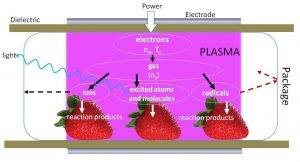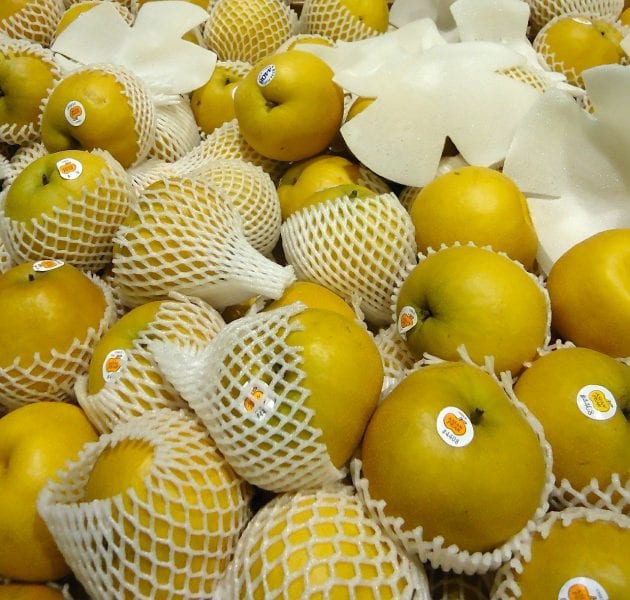
Schematic of plasma generation within the confines of a gas-filled package.
The food industry continually seeks innovative technologies and approaches to improve both food production and processing methods. Apart from the competitive advantages such innovation may bring, the industry faces a global challenge of ensuring food security for a rapidly growing population. Food by its nature and production means is prone to microbial and/or pest contamination. Consequently, the industry relies on a range of intervention strategies where processing steps are employed at points along the food chain to control contaminants to ensure both product safety and/or extend shelf-life. Recently cold plasma has been added to these strategies. The potential applications of plasma technology are extensive and the successful demonstration of the many different applications of plasma – ranging from potential extension of product shelf-life to environmental sustainability – have caught the attention of the scientific community and industry alike. In a recently published review on the status and challenges of transferring plasma technology to the food industry the authors present several major challenges we face at the moment.

Multi-jet atmospheric pressure plasma discharges designed for food decontamination (DIT BioPlasma Lab).
One of the major challenges is the development of process compatible technology designs and scale-up. Although there are many studies who successfully managed to use plasma technology to improve food production and processing, the reported studies to date are almost exclusively at lab scale. One of the difficulties is to scale-up without compromising the plasma uniformity: innovative ideas such as a honeycomb design for plasma jet-to-jet coupling seem to be promising. Another major challenge is consumer acceptance: the sparse data available on the toxicity of plasma as well as a lack of legislation or regulatory guidance from any of the regulatory bodies specific to plasma treatment of food makes it a lot less likely for consumers to go buy plasma treated veggies and fruit. It seems that the scientific community and food industry are up for a big but exciting challenge when it comes to plasma technology.
To read more on the current developments and other challenges of plasma technology in the food industry simply click here for the review. The full review was recently published online – in early view – and will be part of the upcoming special issue on Plasma and Agriculture of the journal Plasma Processes and Polymers.

















